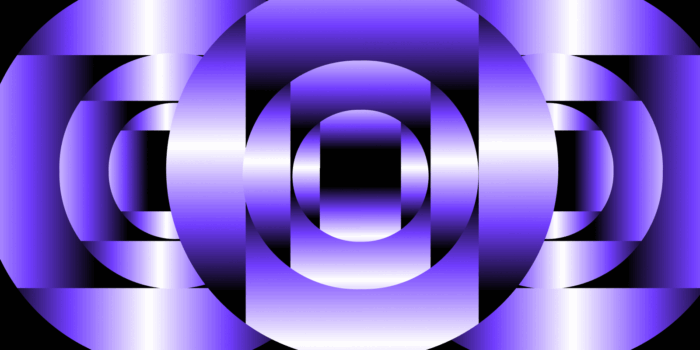Brands, the jig is up. Today, it’s not enough to have a good product. Brands must create lasting impressions and promote deeper connections with their audience with brand activation.
Brand activation brings a brand to life by creating engaging and memorable consumer experiences. These experiences aim to form a strong emotional connection between the brand and its audience, encouraging loyalty and advocacy. Unlike traditional advertising, brand activation focuses on direct interactions and immersive activities that make a lasting impact. It increases brand awareness, drives consumer engagement, builds emotional connections, boosts sales, and generates word-of-mouth.
If you have social media, you are familiar with brand activations and have seen videos. However, if it does not ring a bell, let’s examine examples.
What Are Some Brand Activation Examples?
Brand activation could come in various shapes and sizes. You can have fun with brand activation with interactive popup shops, virtual reality experiences, influencer collaborations, branded events and festivals, product launch stunts, brand partnerships, and many more.
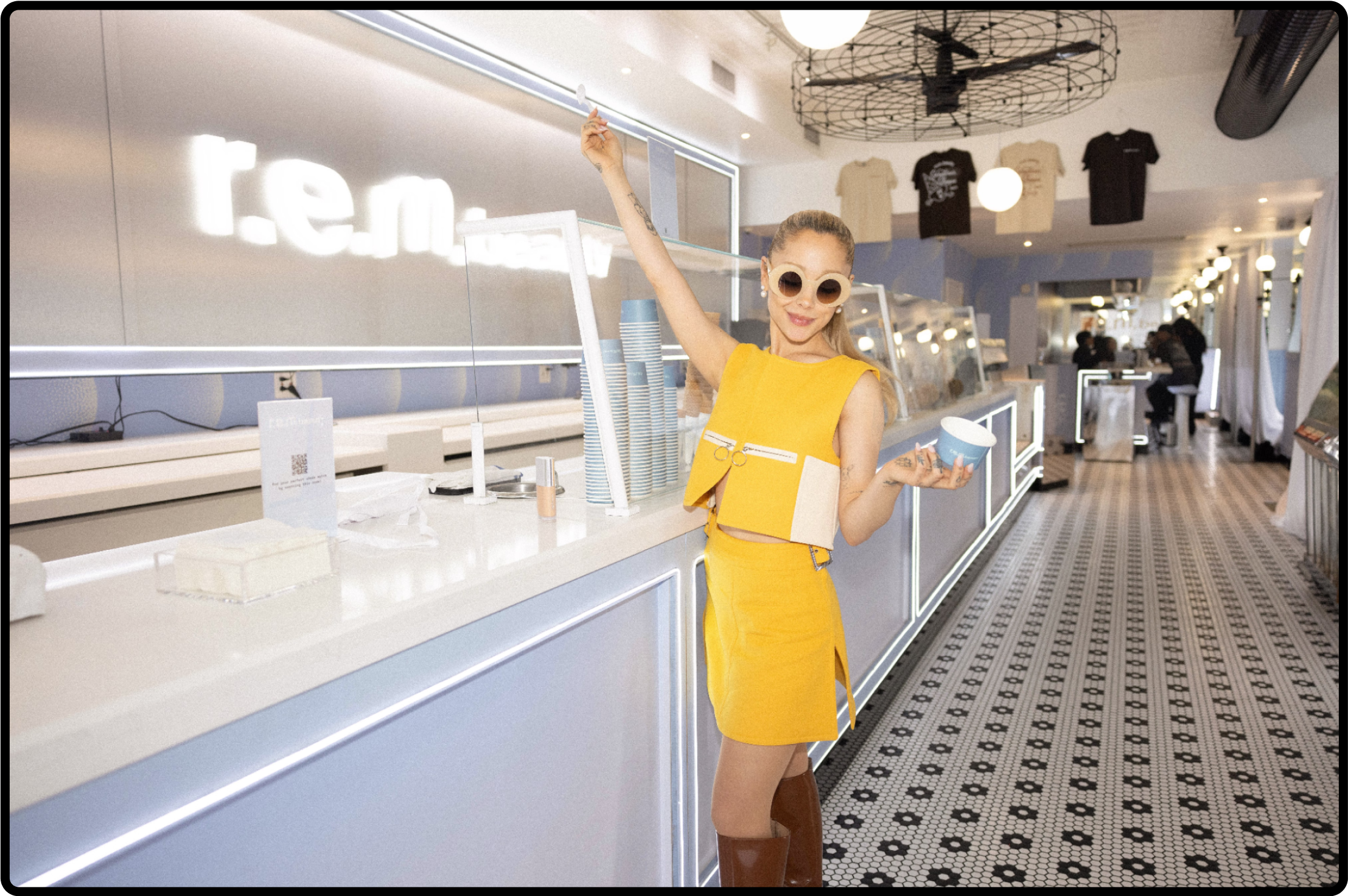
For the launch of her new r.e.m. beauty foundation line, Ariana Grande’s Sweetener Pop-Up Shoppe is a perfect example of brand activation. It was a two-day limited-time pop-up experience with different foundation shades as ice cream. It was a clever spin on promoting her brand by giving away free sweet treats and goodies. Grande herself even surprised fans with her presence.
Although this may have happened last year, it’s a memorable brand activation with its clever play on sweet treats and those resembling foundation shades, a controversial topic in the beauty industry.
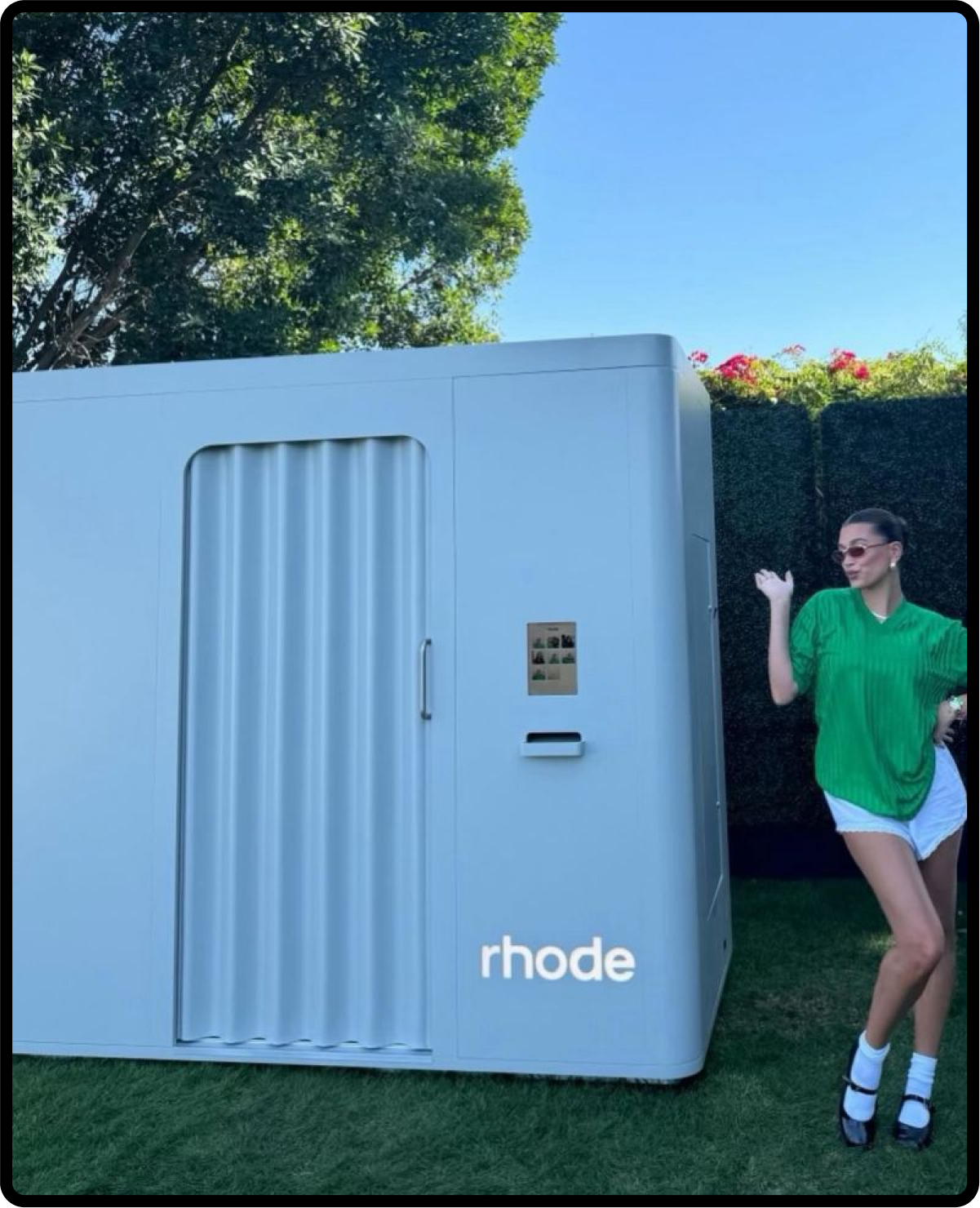
Brand activations that tend to be spoken all year around are the ones that appear in Coachella. The 9-day California music festival is the most talked about event of the year, welcoming people worldwide and nationwide. Obviously, brand activations have to pop out then.
While all brand activations at Coachella were unique, rhode skin by Hailey Bieber was the most interesting and straight to the point– a photobooth where any passersby can take a quick snap of a photo, receiving a lip tint in exchange.
The young skincare brand was introduced to the public in 2022. Since its launch, it was all the rage on social media with young Gen-Z girls excited to get their hands on the peptide lip tints. Bieber herself is also known as the “it girl” of the Gen-Z generation, with a line of girls desperate to be her making the lip tints a gateway to being her.
The photobooth idea was creative and ingenious. With an event like Coachella, all the girls attending would want a taste of the lip tint. Bieber and her marketing team showcased an important skill: understanding their audience enough to market their best-selling line of products innovatively.
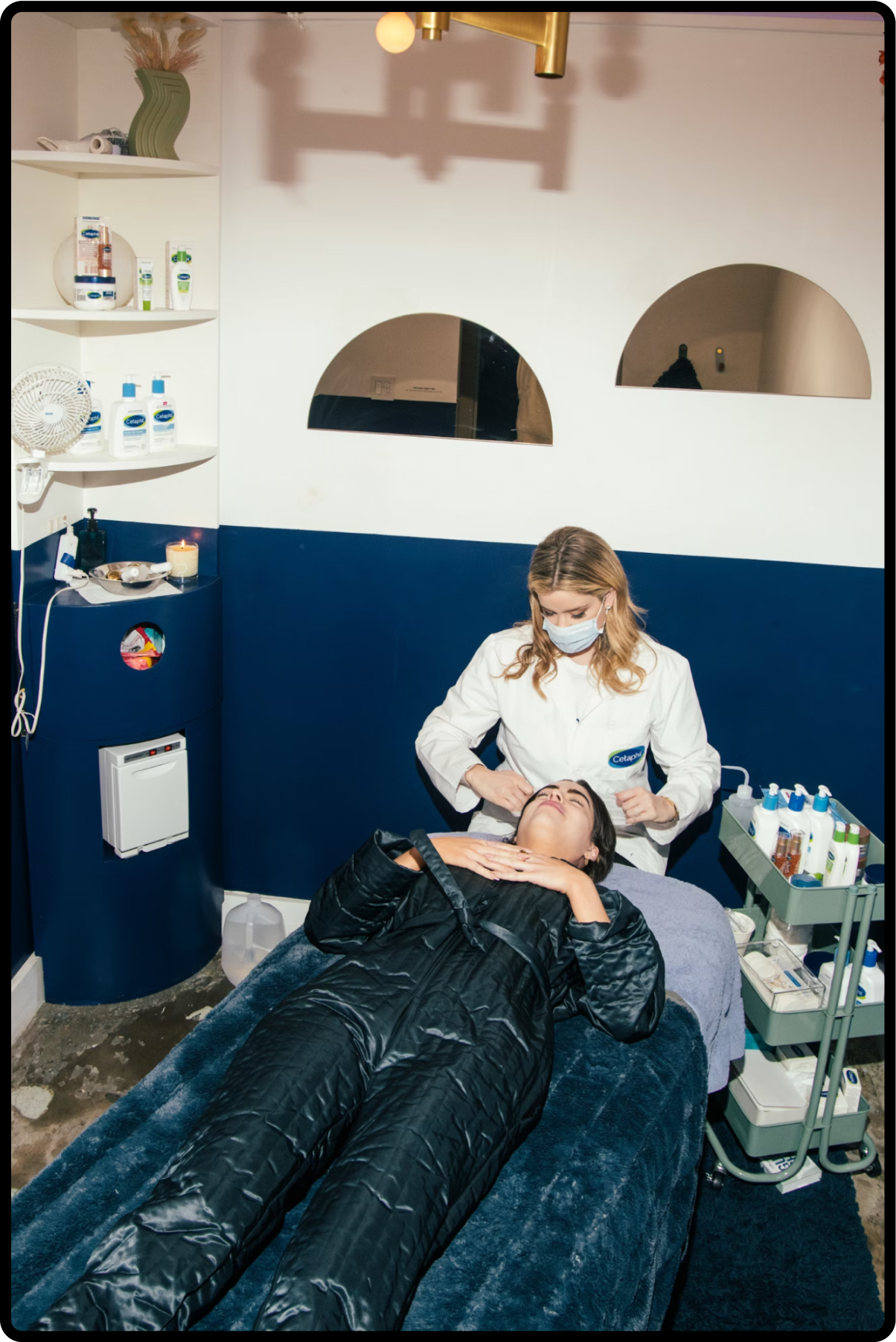
A relevant, recent brand activation was with Cetaphil, the skincare company, during New York Fashion Week, in which they enlisted influencers and consumers from different countries to be the “Face of Cetaphil,” including a free trip to New York to attend NYFW.
Attendees of the event were provided with custom spa appointments using their products. During a hectic time such as New York Fashion Week, one needs to remember to wind down and focus on their mental health through skincare. With a predominant generation interested in NYFW who are also major advocates for mental health, this was an ingenious brand activation and a smart observation from their team.
What is an Activation Strategy?
An activation strategy is a complete plan designed to outline when and how to engage users to keep them interested in a product or brand. The strategy outlines how a brand will connect with its target audience, generate interest, foster loyalty, and achieve specific marketing goals.
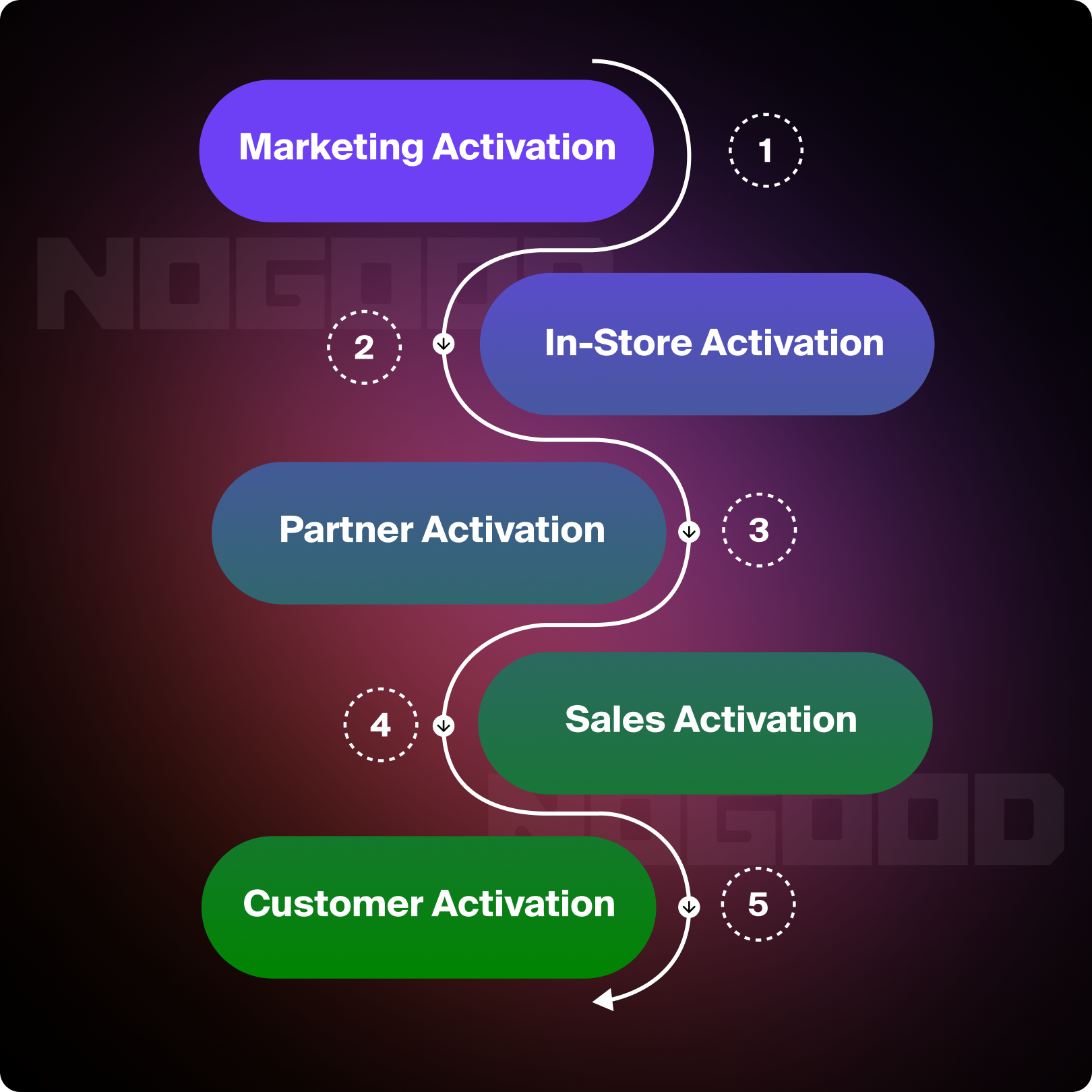
Activation strategies can have different objectives, though, including:
Marketing Activation
This process focuses on generating brand awareness and enhancing the customer’s path to purchase through impactful campaigns, events, and experiences. With recognition of the brand, visibility is increased, which creates positive and memorable experiences that enhance brand perception. Word-of-mouth marketing and social media sharing are also encouraged by others through this method of activation.
Some examples:
- Launching targeted advertising campaigns across various media channels to create buzz and attract attention.
- Hosting events such as product launches, pop-up shops, or experiential marketing events where consumers can interact directly with the brand.
- Creating immersive brand experiences that allow consumers to engage with the brand uniquely and memorably, such as virtual reality experiences or interactive online content.
In-store Activation
This strategy allows customers to interact, experience, and engage with products firsthand, such as through product demos, sampling, or interactive displays within the retail environment. This enhances the in-store shopping experience, increases product knowledge and confidence among consumers, and drives immediate purchases by showcasing the product’s value.
Some examples:
- Offering live demonstrations of products to showcase their features and benefits.
- Allowing customers to try products for free, helping them make informed purchasing decisions.
- Setting up interactive kiosks or displays that provide detailed product information and allow customers to engage with the brand.
Partner Activation
This technique transforms recruited partners into active and effective collaborators by providing them with the necessary tools and support that strengthen relationships with partners along with increasing partner engagement and motivation. Overall, this enhances the effectiveness of the partner network in driving sales and brand awareness.
Some examples:
- Enablement Materials
Supplying partners with marketing materials, sales tools, and product information to help them effectively promote and sell the brand’s products.
- Product Training Workshops
Conducting workshops and training sessions to ensure partners understand the product and can communicate its benefits effectively.
- Co-marketing Campaigns
Collaborating with partners on joint marketing efforts to expand reach and leverage each other’s strengths.
Sales Activation
This approach implements short-term tactics to influence potential customers to make a sale and generate immediate revenue that boosts short-term sales and revenue, encourages quick decision-making among potential customers, and provides measurable results that can be analyzed for future campaigns.
Some examples:
- Promotions and Discounts
Offering limited-time discounts, deals, or special offers to incentivize purchases.
- Sales Contests
Running contests that reward sales teams or customers for achieving specific sales targets.
- Urgency Tactics
Creating a sense of urgency with limited stock or time-sensitive offers to prompt immediate action.
Customer Activation
This method consists of steps and actions to motivate customers to advance to the next stages of their lifecycle, such as becoming a loyal customer. Through this process, customer retention and lifetime value increases with enhanced customer satisfaction and loyalty that encourages positive word-of-mouth and referrals.
Some examples:
- Loyalty Programs
Implementing programs that reward customers for repeat purchases, referrals, and other engagement activities.
- Personalized Communication
Sending tailored messages, offers, and content based on customer behavior and preferences.
- Customer Onboarding
Providing a smooth and informative onboarding experience to help new customers quickly understand and start using the product effectively.
How Do You Create a Brand Activation?
A brand activation involves careful planning, creativity, and execution to ensure it resonates with your target audience and achieves your marketing goals. It must be intriguing to others who have not heard of your brand and attract returning customers who are familiar with your brand.
1. Define Your Objectives
What do you want to achieve with your brand activation? You must define what you choose to accomplish with your brand. This may be:
- Increasing brand awareness
- Driving consumer engagement
- Generating leads or sales
- Building brand loyalty
- Creating buzz on social media
2. Understand Your Target Audience
For any brand, a target audience is necessary, and it’s of utmost importance to understand them because they are the people who drive your business. Understanding your audience may include:
- Studying their demographics: age, gender, location, income, etc
- Psychographics: interests, values, lifestyles, and behaviors
- Preferences: experiences and interactions they enjoy
3. Develop a Unique Concept
In a world of generic brands, how will your brand stand out? How can you represent your brand through an interesting concept of brand activation? Concepts to question include:
- Theme: What will be the central theme or idea of your activation?
- Format: Will it be an event, a digital experience, a sampling campaign, or something else?
- Engagement: How will you engage your audience? Interactive activities, games, demos, or contests?
4. Plan the Logistics
Now, the fun part! Planning it out and seeing it come to life is the best part of it all. It makes your hard work acknowledged, especially if the details of the logistics ensure smooth execution, such as:
- Location: Choose a venue that suits your concept and audience. It could be a physical location or an online platform.
- Timing: Select a date and time that maximizes attendance and engagement.
- Resources: Identify the materials, staff, and technology needed.
5. Promote Your Activation
Promotion is what matters to help spread the word of your brand activation. This will build anticipation and momentum before your event and attract participants. To rally people, it is best practice to promote through:
- Social Media: Create teaser posts, event pages, and shareable content.
- Email Marketing: Send invites and reminders to your email list.
- Influencer Partnerships: Collaborate with influencers to extend your reach.
- Paid Advertising: Use targeted ads on platforms like Facebook, Instagram, or Google.
6. Execute the Activation
On the day of the activation, ensure everything is set up and ready to go:
- Engage Participants: Provide a seamless and engaging experience for participants.
- Collect Data: Gather contact information, feedback, and other relevant data from attendees.
- Document the Event: Capture photos and videos to share on social media and other platforms.
7. Follow Up and Analyze
Could your brand activation have turned out better? Where could you improve for the next one? Instead of questioning, why not ask the people who attended?
After the activation, follow up with participants and analyze the results:
- Thank You Messages: Send thank you emails and messages to participants.
- Survey: Collect feedback through surveys to understand what worked and what didn’t.
- Metrics: Measure success based on your initial objectives. Look at metrics such as engagement rates, social media mentions, sales figures, and ROI.
Nowadays, simply having a great product may not be enough. To promote their product, brands must go beyond the depths of traditional advertising to create lasting impressions with their audience, which is where brand activation comes into play.
Unlike the traditional way, brand activation brings energy to a brand where they may be lacking through engagement and memorable consumer experiences. These experiences aim to form strong emotional connections between the brand and its audience, encouraging loyalty and advocacy. It can be made fun and less of a hassle with interactive pop-up shops to influencer collaborations and branded events. The key is to create an experience that’s not only unique and memorable but also resonates with your target audience.
An effective brand activation strategy is essential for engaging users and keeping them interested in a product or brand. It involves defining clear objectives, understanding your target audience, developing a unique concept, planning the logistics, promoting the activation, executing it seamlessly, and following up with participants to gather feedback and measure success.
By incorporating these elements into your marketing efforts, you can create powerful brand activations that not only capture attention but also foster lasting loyalty and advocacy among your consumers. Your brand can thrive in meaningful and impactful ways.





